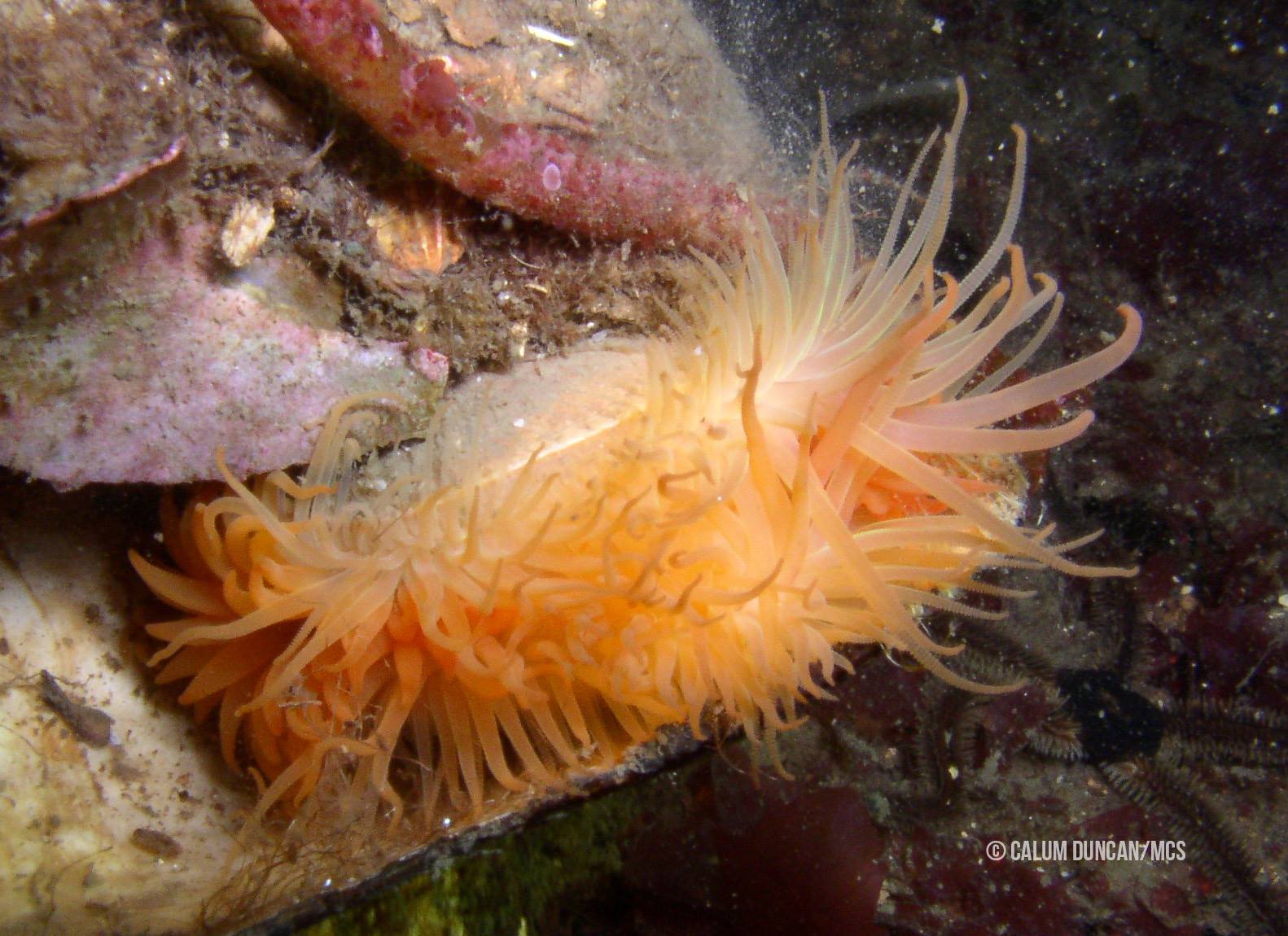Aptly named for their bright orange tentacles which emerge from their shells to collect food. The shells also produce sticky threads which combine small stones and shell debris to create a nest. When many of these nests form together, a flame shell bed is created, able to house hundreds of other organisms in a reef-like structure, suitable nursery grounds for many species of fish.
Flame shells grow to 2.5-4cm across but their beds can contain over 100 million individuals over 75 hectares. They favour relatively shallow water with a moderate or strong current.
Action Needed
- Advocate prohibition of dredges and bottom trawlers from areas known to contain flame shell beds
- Identify causes and seek reduction in sedimentation and pollution in flame shell beds.
- Ensure the Scottish Biodiversity Strategy is fully implemented
Threats
Whole beds may be demolished by mechanical disturbance from dredgers and bottom trawlers, killing many of the organisms and young fish which make their home there. Pollution also affects the delicate reefs created by flame shell beds.
MSP Nature Champion

Russell Findlay
Member for: West Scotland
Region: West of Scotland
Party: Scottish Conservative & Unionist Party


